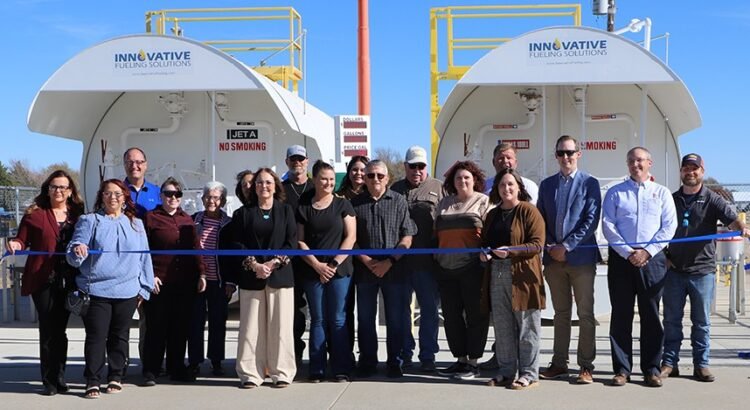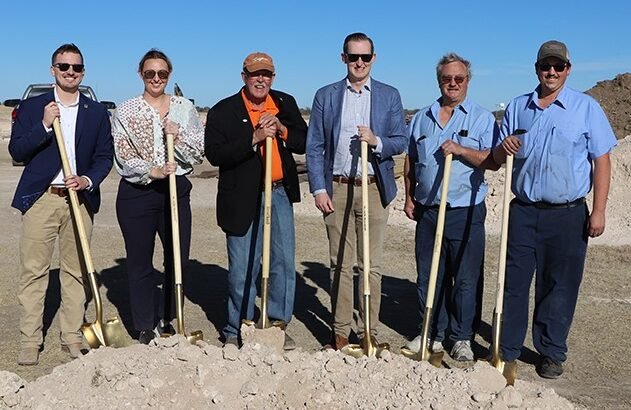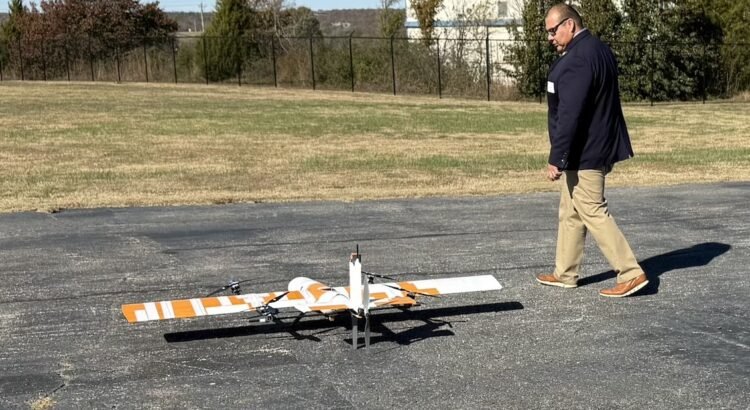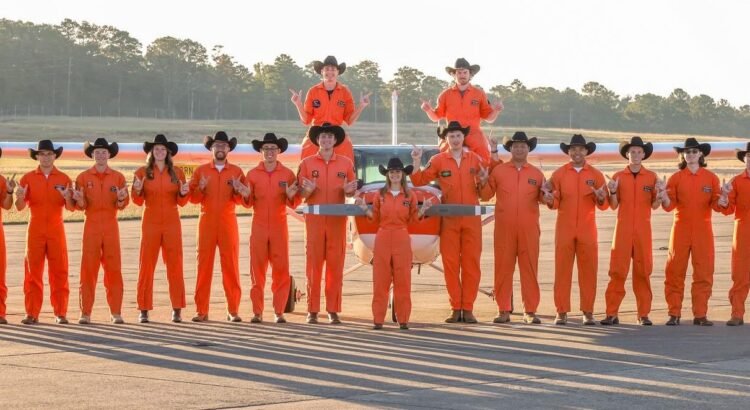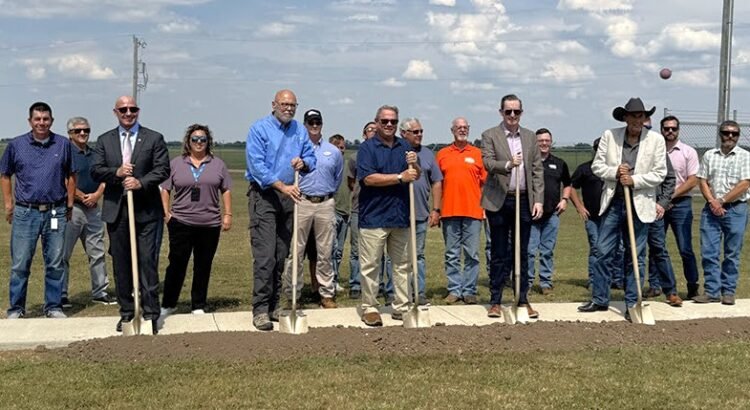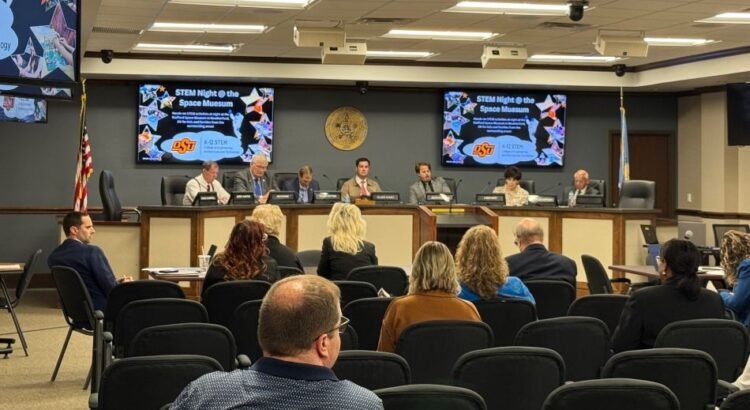A sold-out crowd of more than 1,300 aviation enthusiasts, professionals and students converged on Friday, Dec. 12, 2025, for the ninth annual Oklahoma Women in Aviation and Aerospace Day (OKWIAAD), a landmark event celebrating a century of flight in the state. Hosted by aviation services provider AAR Corporation in partnership with JE Dunn Construction, and […]
Oklahoma
AAR hosts 2025 Oklahoma Women in Aviation and Aerospace Day
Photo – AAR celebrates 2025 Oklahoma Women in Aviation and Aerospace Day in Oklahoma City on December 12, 2025. AAR CORP. hosted Oklahoma Department of Aerospace & Aeronautics’ 2025 Oklahoma Women in Aviation and Aerospace Day and celebrated 100 years of aviation in Oklahoma at the Company’s newly constructed Airframe MRO Hangar 4. The new […]
Hooker Municipal Airport, Oklahoma Department of Aerospace and Aeronautics Fuel Future Growth with $1M Upgrade
Photo – Hooker Municipal Airport and the Oklahoma Department of Aerospace and Aeronautics celebrated a $1,000,000 upgrade to the airport’s fuel system on Monday, Nov. 17, 2025. The improvement replaced outdated and unreliable fuel tanks. Hooker Municipal Airport, in partnership with the Oklahoma Department of Aerospace and Aeronautics (ODAA), officially celebrated a major infrastructure upgrade […]
Guymon Municipal Airport, Oklahoma Department of Aerospace and Aeronautics Kick Off Key Hangar Project Construction in Panhandle
Photo – The Oklahoma Department of Aerospace and Aeronautics and Guymon Municipal Airport held a groundbreaking ceremony on Monday, Nov. 17, 2025. The new hangar is expected to be completed by spring 2026. The Guymon Municipal Airport and the Oklahoma Department of Aerospace and Aeronautics (ODAA) marked the start of construction on a new 120-foot […]
Osage LLC Hosts Osage Nation Congress for Tour and Presentation of Future Skyway Range Plans
Osage LLC welcomed members of the Osage Nation Congress for an in-depth tour and lunch briefing at Skyway Range, offering a first look at an ambitious vision to transform the area into a leading center for uncrewed aerial systems (UAS) innovation, testing, and economic growth. The visit provided Osage leaders with a comprehensive overview of […]
Oklahoma State University’s Flying Aggies Defend Regional Title
The Oklahoma State University Flying Aggies flight team flew back into town as regional champions for the second year in a row after competing in the National Intercollegiate Flying Association Region 4 SAFECON championship. The OSU flight team came out on top — earning 631 points during the four-day competition, which took place Oct. 13-17 […]
Oklahoma Department of Aerospace and Aeronautics, Stroud Launch Runway Expansion Project
Photo – The Oklahoma Department of Aerospace and Aeronautics and Stroud Municipal Airport celebrated airport improvements with a groundbreaking ceremony in September 2025. The airport will widen and extend the runway to meet federal safety standards. The Oklahoma Department of Aerospace and Aeronautics (ODAA) and Stroud Municipal Airport celebrated the widening and extension of their […]
Oklahoma High Schoolers Compete in First Annual Drone Search and Rescue Championship
Thirty Oklahoma high school teams showcased their drone-powered search and rescue skills at the inaugural “Fly Forward: Search and Rescue State Championship” on Tuesday, Oct. 21 at Lake Carl Blackwell in Stillwater. The day-long event was hosted by the Oklahoma Department of Aerospace and Aeronautics (ODAA) and the Oklahoma Aerospace Institute for Research and Education […]
Duncan Airport Rehabilitates Apron Pavement, Constructs Taxilane to Increase Safety and Functionality
By Melissa Fuller Halliburton Field Airport in Duncan has made significant improvements over the past two years. These enhancements, including the rehabilitation of the main apron pavement and the construction of a new hangar taxilane, increase safety and elevate the overall functionality of the airport, making it a more appealing destination for aviation businesses. The new […]
Oklahoma Space Industry Development Authority Awards More Than $160,000 to Space Education Programs
Photo – More than $160,000 in space education grants were awarded to 33 STEM-related programs throughout Oklahoma at the October 8, 2025 OSIDA board meeting. The Oklahoma Space Industry Development Authority (OSIDA) Board approved more than $160,000 in aerospace education funding on Oct. 8, 2025, to prepare students for the state’s growing space workforce. The […]



